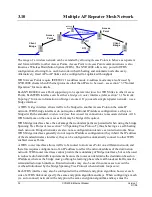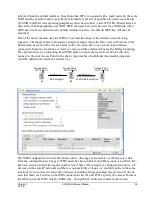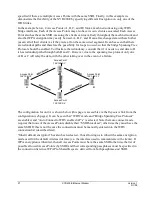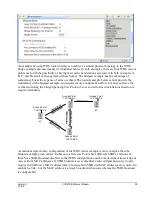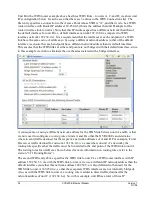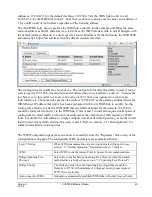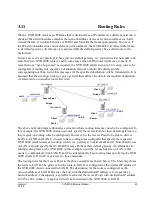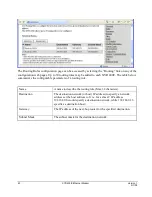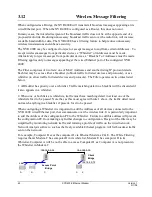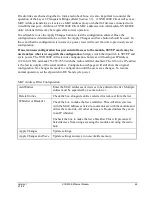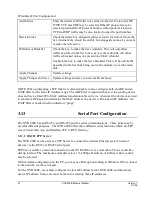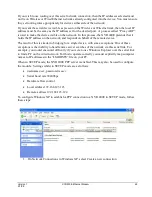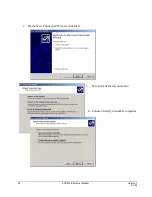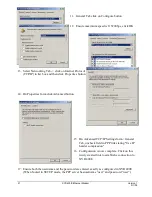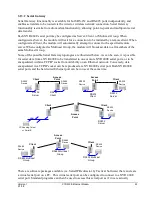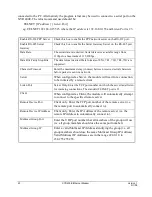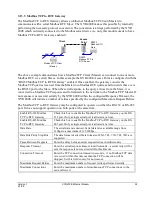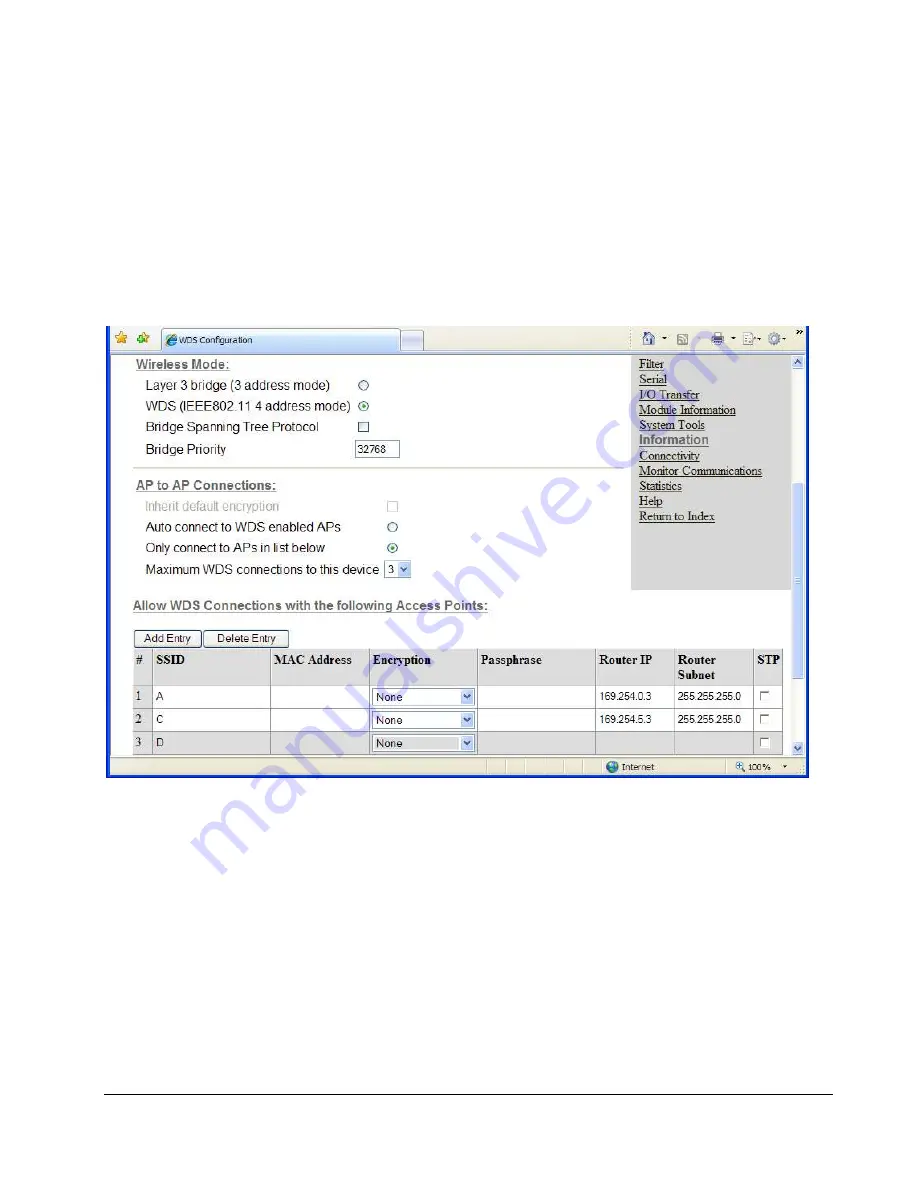
39
XYR400E Ethernet Modem
Version 1
5/1/08
Unit B in the WDS router example above has three WDS links – to units A, C, and D; we show unit
B’s configuration below. It can be seen that there are 3 entries in the WDS Connections list. The
first entry specifies a connection to the Access Point whose SSID is “A”, and that it is to be a WDS
router interface with Router IP address 169.254.0.3 (this is the address that unit B adopts for the
router interface link to unit A). Note that this IP Address specifies a different network than that of
the default interface for unit B (i.e. default interface network 192.168.0.x compared to WDS
interface network 169.254.0.x). It is a requirement that the interfaces at each end-point of a WDS
link have the same
network
address, so by using a different network address to that of the default
interface we ensure that each end point has a different network address than its default interface.
This ensures that the WDS links at either end point are not bridged with their default interface, since
in this example we wish to eliminate the overhead associated with a bridged interface.
A consequence of using a different network address for the WDS link between unit A and B, is that
we now need to configure a
routing rule
at units A and B so that the XYR 400E can determine
where to send traffic destined for the respective network addresses of A and B. For example, if unit
B receives traffic destined for network 192.168.0.x (i.e. somewhere on unit A’s network), the
routing rule specifies that the traffic must be forwarded to the end point of the WDS link to unit A.
The routing rules for unit B are shown below (for more information on routing rules, refer to the
section “3.11 Routing Rules”).
The second WDS entry above specifies the WDS link to unit C as a WDS router interface with IP
address 169.254.5.3. As with the WDS link to unit A, we use a different IP network address than the
default interface (note that this network address 169.254.5.x is also different to that used for the
WDS link to unit A 169.254.0.x, so that these separate WDS interfaces are not internally bridged).
Also, as with the WDS link to unit A, a routing rule is added to direct traffic destined for the
network address of unit C (192.168.6.x). So, in this example, unit B has a total of three IP











